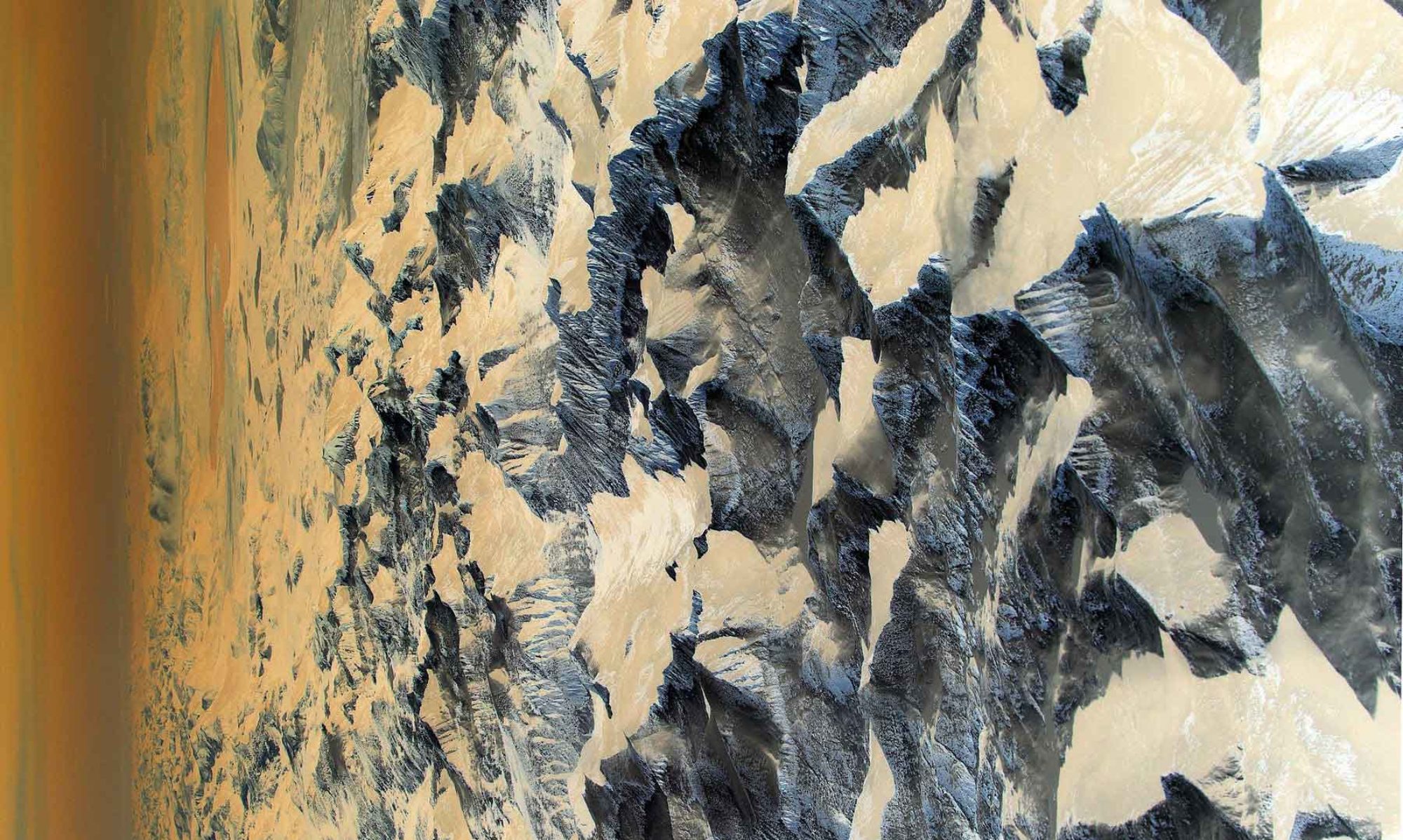At the Margins Pop-up Show
An extension of At the Margins, 7 p.m.-11 p.m. Saturday night!
The At the Margins Pop-up Show will feature 14 video, performance, installation and interactive works activating the spaces around us.
7PM-9PM
Arts Amphitheater
Arts Plaza
9PM-11PM
4th Floor CAC
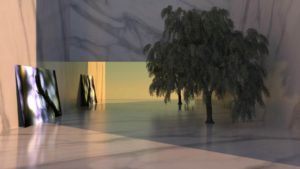
And All of Everything
Brad Necyk, University of Alberta
Earlier in 2019, I wrote to my daughters that each artwork we make is our philosophy of everything at that moment. It had me rethink my developing understandings of visions, consciousness, transcendence, and the collective psychological content that they pull from. This video is a beginning artistic explorations into works that tell larger, longer stories about our collective pasts, presents, and futures through experiences of time, the march of time, and the growing sense of being-out-of-time.
Brad Necyk is a multimedia artist and writer in Canada whose practice engages with issues of medicine, mental health, and precarious populations and subjects. His works include drawings and paintings, still and motion film, sculpture, 3D imaging and printing, virtual reality, and performance. Currently, he is a visiting artist-researcher at the Centre for Addiction and Mental Health in Toronto and recently received a PhD in Psychiatry at the University of Alberta.
bradnecyk.com
IG: @bradnecyk
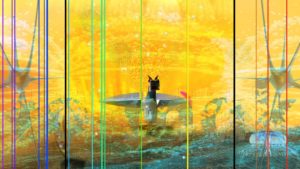
Slow Light Shadow Matter
Dennis Summers, cco Strategic Technologies for Art, Globe and Environment
Slow Light Shadow Matter is a long-term project comprising 13 short digitally created animated videos: twelve chapters and a prologue. The title itself refers to two concepts from physics. In 1999 scientists “used a new state of matter called a Bose-Einstein condensate … to bring light down to the speed of a bicycle and then later to a dead halt.” This is called slow light. Shadow matter refers to a hypothetical material “that interacts with ordinary matter, only by gravity, which means hardly at all.” Each chapter is inspired by an artist and a scientist who were approximate contemporaries. The chapters are held together by multiple themes from science, mythology and art. In addition to a free-improv soundtrack created by internationally known composer and musician Thollem Electric, there is a voice-over recounting a biography closely based on jazz saxophonist Ornette Coleman.
Dennis Summers has exhibited artwork in a wide range of genres and media internationally for over 30 years. His artists books, videos and interactive digital projects are in the collections of several major museums including the MOMA, and the Pompidou Center. Much of his artwork has been inspired by science.
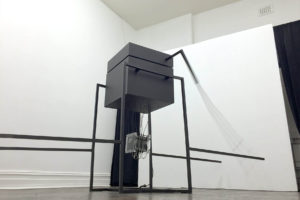
The Tempering
Devon Ward, Wonsook Kim School of Art, Illinois State University
The Tempering is a robotic installation that attempts imbue primordial elements – water, earth and bacteria – with a vital psychological force. It explores the agency of nonhuman actors from the environment by using an emerging technology called microbial fuel cells (MFCs)–batteries made from water and mud–to create low voltages that trigger a mechanical arm to swing a whip in the gallery. Using mud collected from Herdsman Lake as the agent which “controls” the whip, The Tempering questions the passive role typical given to nonhumans elements, especially in our current the age of environmental precarity.
Devon Ward is an emerging artist who creates digital and living systems to explore notions of time, place, and identity. His works often rely on speculative allegories that examine current social conditions affected by emerging technologies. These works often focus on the changing relationships between humans, non-humans and the environment at time when the dramatic effects of climate change are readily visible.
devon-ward.com/
IG: @dddevonwwward
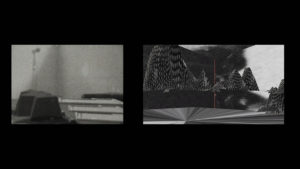
Translations
Eugenia Barbuc, UCI MFA
This work is an investigation of translations and entanglements of image and place. A desert landscape in a VR generated game is for me simultaneously Romania, El Salvador and an icon of the Southwest. I am interested in the image being doubled, and double backed, it overlaps and negotiates over itself, both sides present and present again.
The cinematic space naturalizes, however two overlapping spaces fight for naturalization between them, and the back and forth is the part that I am interested in. The eye must go back and forth between worlds, both worlds echo each other and I am interested in blurring the distinctions and boundaries between them.
Eugenia Barbuc is an artist who explores personal and national histories, queerness and modes of entanglement through interdisciplinary methods. She is an educator, ally and fan of artists from the progressive art studio ECF.
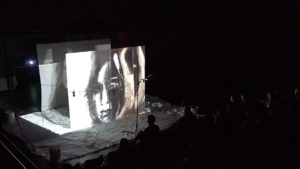
SOMA
Governance Inc. (Rebecca Uliasz and Quran Karriem), Duke University
Governance Inc. is the collaborative audio-visual noise performance project of us (Rebecca Uliasz and Quran Karriem). Governance is an umbrella term for a series of performative interventions where we sonically and visually engage with digital and analog material from our ongoing practice based research through analog synthesizers, digital tools, and custom made hardware. Our recent collaborative works visually and sonically explore ImageNet, a big data set frequently used to train object recognition technology. The intention of the performance is to present the material to an audience in an aesthetic mode and encourage dialog about the politics of the dataset’s curation. Using digital and analogue synthesizers and live generated imagery, we sonify and project images and text contained in this dataset, jarringly exposing some of the racist, sexist, and xenophobic categories contained within the data, and at moments, turning the camera on the audience so that their images were processed and labeled by the program. The performance is meant to be affective so much as it was to make tangible the logics contained within technologies that audience members might encounter on a daily basis.
https://gvnc.tv/
facebook.com/gvncAV
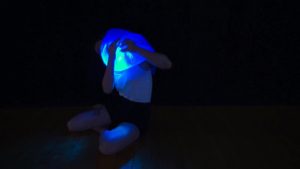
Exercises for Being Closer to You, Exercise #1: Engagement with Failure
HEaD (Krista Davis and Nina Vroemen)
HEaD’s performance series Exercises for Being Closer to You, is an attempt to restructure the [white, western, colonial, capitalist] human-centered understanding of land, animals and other non-human entities with whom we live. In Exercise 1: Engagements with Failure, our relationship to water is examined through gestures of care. The bag — ubiquitous with our single-use plastic profit-above-all culture — acts as both an aid for our bodies to be close to water, as much as it thwarts the possibility of this closeness. The resulting “dance” presents an unrelenting act of care despite the unavoidable failure of their gestures. With this performance, HEaD asks the questions: What may come of staying with the trouble of our current ecological crisis? How can an unrelenting care help us imagine new relationships? And what possibilities can emerge from our failures?
HEaD (Hypercosmic Earth and Dirt) is the collaboration between Yukon-based artist Krista Davis and Montreal-based artist Nina Vroemen. Davis and Vroemen bring their work in video, performance, animation, dance and sonic experimentation together to build works principled on an ethics of both wonder and care.
kristaleighdavis.com/projects#/head/
IG: @hypercosmicearthanddirt
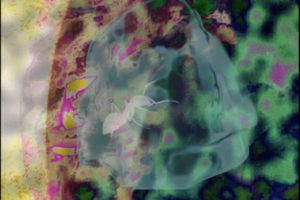
Pangaea Drifting
Lissa Holloway-Attaway (poetry, video), Lars Bröndum (electro-acoustic music, video) Moa Andersson (digital art): University of Skövde, Division of Game Development, Sweden
Pangaea Drifting is a reflection on geological history and the changing natures of land and seascapes and their relationships to human/nonhuman forces over deep time. The video composition combines electro-acoustic music, digital art, and spoken-word poetry to explore the troubled elemental forces of the Anthropocene. With the threat of geological and ecological disaster within reach, we explore devastation at the cellular, solar, molten, water-bogged and amber-infused levels. When continents drift, what is left in their wake? What do sea floors hide and reveal when they creep?
Lissa Holloway-Attaway is an Associate Professor in Media Arts, Aesthetics and Narration who researches/teaches games and digital media cultures; Lars Bröndum is a Professor of Music who works as a composer, performer of live-electronics, theorist and guitarist. Moa Andersson is a digital artist who studied game graphics and Serious Games.
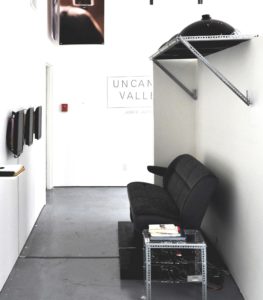
Idiotic Resonances: Uncanny Valley of the Sun
Garrett Laroy Johnson and Brandon Mechtley (ititit{inc})
Idiotic Resonances is a set of rhythmanalytic (Lefebrvre 1992) practices attuning to the excesses and entropies of complex systems. In this iteration, “The Uncanny Valley of the Sun”, we surf along the infrastructure of the “infernal city of Phoenix” (Mchugh and Kiston 2018) via footage and field recordings gathered in the urban desert. All of the sonic material was taken directly from our car stereos, which were tuned to 530 kHz AM. Since this frequency band is unoccupied by broadcasts in most of the US, what is heard are fluctuations of the electromagnetic field caused by natural and (more commonly) anthropogenic electrical activities. In so doing, we turn information theory on its head; signal becomes noise and noise becomes signal. These sounds can be heard on the parabolic speakers overhead; this normally inaudible sound field is also made haptic by the bass-transducer installed in the van seat.
ITITIT{inc} is a nascent transdisciplinary and experimental cooperative para-academic corporation specializing in speculative engineering. In 2019, the team organized a summer school for students of computational media and continues work on COSA (Community Organized Socio[technical]economic [an]Architecture), a hardware/software EoT for composing expressive dynamics of alternative economies.
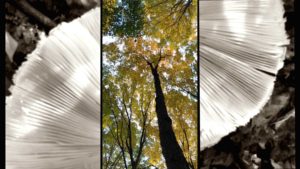
Stranger Strangers
Maria Whiteman Environmental Resilience Institute, Indiana University, Bloomington
This work is motivated by my desire to foster a greater understanding of the role fungi play in a rapidly changing climate and to provide a new appreciation of deep time and shared ecology, particularly the entanglements of interspecies and the mycorrhizal relationships between the fungal tissues. The work uses fungi as part of the conceptual link, as a living artwork that integrates the multifaceted connection fungi have with trees, plants, air, and humans. By orientating toward a kingdom of organisms that thrive on decaying matter, the aim is to position my work in the present moment of ecological collapse. Whereas my earlier work with taxidermy represented a mournful remembrance of animals facing extinction, my current projects look ahead to eagerly, curiously, and thoughtfully anticipate the altered ecosystems that humankind will inhabit.
Interconnectedness is at the heart of Maria Whiteman’s art. Engaging with animals, landscapes, and most recently fungi, she uses multiple media including photography and video to convey the deep and intrinsic ties between humans and other living things. As these interrelationships underlie environmental science, her goal at the Environmental Resilience Institute (ERI) is to create a visual entry point for people to approach the science through a visceral, emotional experience.
maria-whiteman.squarespace.com
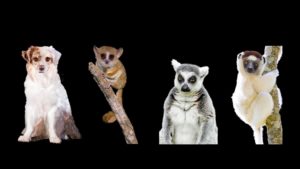
The Jollies
Rachel Mayeri, Harvey Mudd College
The primatologist Alison Jolly (1937-2014) was known for her pioneering theory on the evolution of social intelligence developed through her study of ring-tailed lemurs. Her scientific and conservation work drew worldwide attention to the unique ecosystem of Madagascar. In this biographical artwork, the artist presents interviews with Jolly’s network of colleagues, friends, and family. Many voices articulate the significance of her scientific discoveries as well as her career: group living over tool making as a driver for evolution, her description of a female dominant primate society, the role of play in learning, as well as her place in the first generation of women in the field of primatology and her development of community-based conservation. Monkeys, lemurs, and Donna Haraway as an Australian Shepherd animate the conversation, producing reflection about humans as part of the primate order, social network, and ecosystem.
Rachel Mayeri is an LA-based artist working at the intersection of art and science. Her videos, installations, and writing projects explore topics ranging from the history of special effects to the human animal. The multi-year project “Primate Cinema” investigates the boundary between human and non-human primates in a series of video experiments.
rachelmayeri.com/blog/2017/05/23/the-jollies/
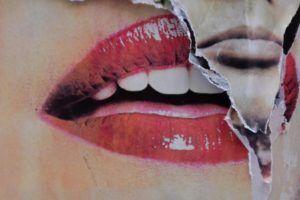
Now Appearing in Bucharest
Ro Lawrence, European Graduate School, and College of the Arts, University of South Florida
Now Appearing in Bucharest is an experimental look at how the mainstream becomes the marginal. Bucharest may or may not be the Paris of the East, but it certainly is a daily dance between history and the present. This short experimental film features a montage of concert posters announcing future performances now lost in their inevitable passage into the past. It is a meditation on the precarity of the popular… loose change from a libidinal economy.
The video’s voice over is a trilingual interpretation of Lyotard’s “The Great Ephemeral Skin”, the introductory text from “Libidinal Economy”. The words fit perfectly what I felt, but could not express, when looking at these images.
Accompanying this film, and shifting its possible interpretation in different directions, is a compact website – a sort of Internet Cul-de-sac, at:
Robert Lawrence is an artist and theorist working at the intersections of traditional media and the Internet in hybrid physical/virtual forms. His work examines the ways we now construct subjectivities in both embodied and online space. He directs the Video, Animation & Digital Arts program at the University of South Florida, and is writing his dissertation in Media Philosophy at the European Graduate School, Saas Fee, Switzerland. The film Now Appearing in Bucharest has been screened at 30 international festivals.
